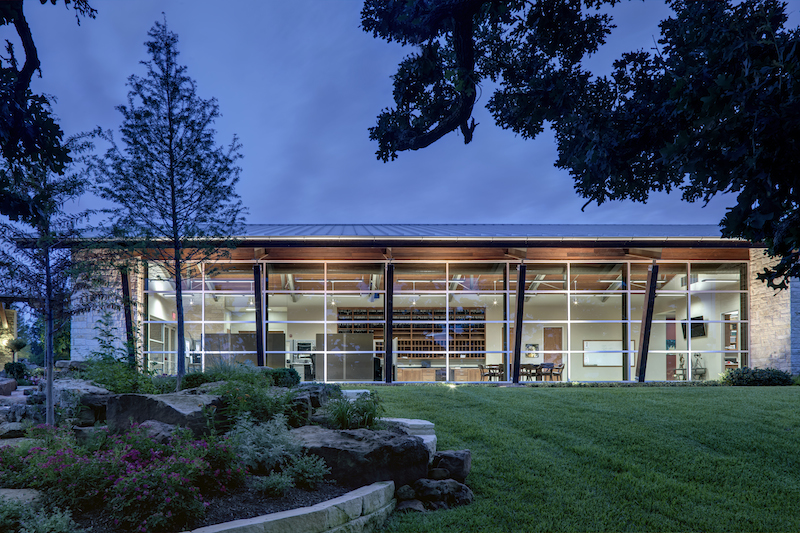Article by: Pamela da Graca, Associate AIA
Choosing exterior materials for a building sounds straightforward. Most people have aesthetic preferences and you only have about a half dozen broad categories between which to choose. But, like any skin, a building’s envelope both separates it from and connects it to the rest of the world. Everyone’s interests intersect in this and that creates a host of factors to consider. Although the list varies for every project, it will almost always include decisions related to appearance, function, maintenance, and budget at a minimum.
APPEARANCE
As the face your building presents to the public, the appearance of the materials matters. Owners and users should care because people prefer places they find beautiful. You can also tell people about the building and its purpose through the materials. Architects will care because, let’s be honest, this is a profession full of people deeply bothered by control joints in the floor not aligning with the ceiling grid. Fortunately this obsessiveness comes with a great deal of training and a recommendation between laying your brick in running versus Flemish bond, let alone whether you use brick or metal panels, usually involves sound reasoning. That reasoning may include context – responding to climate and adjacent buildings – or the image you want your building to project – transparency versus solidity, traditional versus modern. It may also involve unavoidable practicalities such as gravity and fluid dynamics.

Central Texas Sports Medicine
Brick patterning breaks up the large facades and ties the client’s love of red brick to the materials and colour schemes of adjacent buildings.
Photographer: Marcel Erminy
FUNCTION
Functionally, the building’s skin controls the passage of light, air, heat, and water between the interior and exterior. The materials used and the way they connect to each other affect this and that interests the engineers as well as the architects. When looking at how well wall and roof assemblies prevent the spread of fire between structures or their performance in high winds and earthquakes, building officials want a say as well. Security consultants worry about blast resistance and visibility; manufacturers limit warranties if products aren’t installed to their requirements; and who won’t care about a floor-to-ceiling clear glass window in the bathroom?
Materials come with inherent properties which mean they serve specific purposes and behave differently from each other. This doesn’t dictate an answer, but it does factor into the choice. Certain materials enhance each other when used together (think steel reinforcing concrete), others make each other degrade when placed in direct contact. Layering materials in a different order might completely change how they work as a group. You can suspend brick below a horizontal surface, but should you? Only with a reason good enough to justify the additional cost and complexity. Brick wants to stack, not hang. A material or system performs at its best when you take advantage of its natural qualities instead of working against them, but that doesn’t mean you will never have a reason to do otherwise.

TDI Brooks International Headquarters
Mast-like timber columns refer to the company’s nautical base and a window wall highlights the transparency central to their culture. It also affords stunning views of the landscaped pond.
Photographer: Charles Davis Smith, AIA
MAINTENANCE
Every material and system, even when used at its most effective in an ideal environment, eventually needs maintenance to keep it functioning properly and looking its best. If you can’t keep pace with the maintenance of the amazing exposed timber columns you want at the entrance, they will not look particularly amazing for very long and you will regret them. If you can maintain them, though, and perhaps reduce the weathering with some extra shelter, they may be the perfect choice. Good decisions balance what is needed with what you can provide and that has as much to do with costs as willingness.

TAMU Soil and Crop Sciences
Corrugated metal and limestone connect to the facility’s agrarian nature. Using finer corrugations and cut stone updates and refines the look for a world class research institution.
Photographer: Marcel Erminy
BUDGET
Everything has to fit within the budget. Initial costs drive decisions in almost every project – trying to build something you can’t afford seldom ends well for anyone. Material, labour, and trickle-down costs – such as the additional structure needed to carry a heavy material over an open space – can all contribute to one scheme having a higher upfront cost than another. This is important, but doesn’t automatically make one the better choice. Going back to the maintenance issue, if you plan to own and occupy the building for a long time you may end up spending more over the life of the building by using the initially less expensive option. Cheaper materials often have shorter lifespans and the cost of maintenance, repair, and replacement over the life of the building can quickly overtake initial savings.

St Thomas ELC
Brick and siding connect the new building to the existing campus structures and the beloved Silvey House it replaces. The composite deck will stand up to weather and preschooler exposure longer than wood while providing a similar look and letting the tree survive when a concrete slab would not.
Photographer: Charles Davis Smith, AIA
This list hardly exhausts the topic – even if it is exhausting to read. An architect’s job involves coordinating the various considerations to help clients achieve their goals. This holds true in all parts of the project and better information only improves designs. So, when starting a project, set a budget and talk to the architect about what you can achieve within that. Discuss what you want from the building over its lifespan. Ask questions, be open to creative solutions, and be honest if you don’t like something. Also – and you’ve probably heard this before – collect pictures of things you do like and try to identify what draws you to them. This, along with your architect’s expertise and a good client/architect relationship, will help make your project a success.

733 North Rosemary
Stone below ties into the Texas Hill Country aesthetic while reducing maintenance. Stucco above reduces the weight which must be carried over the roof, simplifying the structure.
Photographer: Charles Davis Smith, AIA
The Arkitex Studio, serving the Bryan/College Station and surrounding areas, blends your personal ideas with our expertise to create a building you can be proud of. Our architects have over 115 years of combined experience. To learn more about our services, visit our website and schedule an appointment today. We are located in the Tremont Building in downtown Bryan, Texas.


